Seaweeds of the South African South Coast


Dictyotales
Dictyotaceae
Exallosorus harveyanus (Pappe ex Kützing) J.A.Phillips 1997: 307
Plants brown, up to about 5 cm tall, comprising broad fan-shaped lobes spreading more or less horizontally from a matted rhizoidal holdfast. Primary lobes 2-5 mm wide with short stipes splitting apically into broad (to 15 mm wide) secondary lobes formed by splits that penetrate about one third of the primary lobes. Blades without in-rolled apices, 6 cells and about 150 μm thick, markedly dorsiventral; upper and lower surfaces with one layer of small, pigmented cortical cells that are approximately square in cross-section and 15-20 μm in diameter; four layers of medullary cells, elongated in longitudinal section, ca. 50-100 μm long and 20-30 μm wide. Apices of blades comprising a single row of large, densely pigmented cells. Ventral surfaces of lobes commonly with rhizoids, even to distal parts of blades.
Sporangia in sori covered by conspicuous indusium, mainly on ventral surfaces of fronds, irregularly circular-ovate, ca. 350-1000 μm across. Sporangia generally rounded-elongate, ca. 50 μm long x 25 μm wide, with a stalk cell, each containing 8 spores when mature (KZN guide says 4!). Gametangia united in indusiate sori; antheridial sori up to 0.5 mm wide, in roughly transverse bands, almost colourless. Single antheridia ca. 100 μm high, 20 µm broad, with ca. 30 tiers of loculi; paraphyses absent. Oogonial sori up to 0.5 mm in diameter, oogonia up to ca. 120 x 35 μm.
Collections, ecology and regional distribution
Collected from False Bay, Western Cape, to Park Rynie, about 80 km south of Durban (17-50). Epilithic from the subtidal fringe down to at least 40 m depth.
World distribution: South African endemic.
Type locality: Kalk Bay, False Bay, Western Cape, South Africa (Silva et al. 1996).
Note: This species was previously known as Zonaria harveyana (Pappe ex Kutzing) Areschoug, but was transferred to the new genus Exallosorus on the basis of reproductive characters (Phillips 1997).
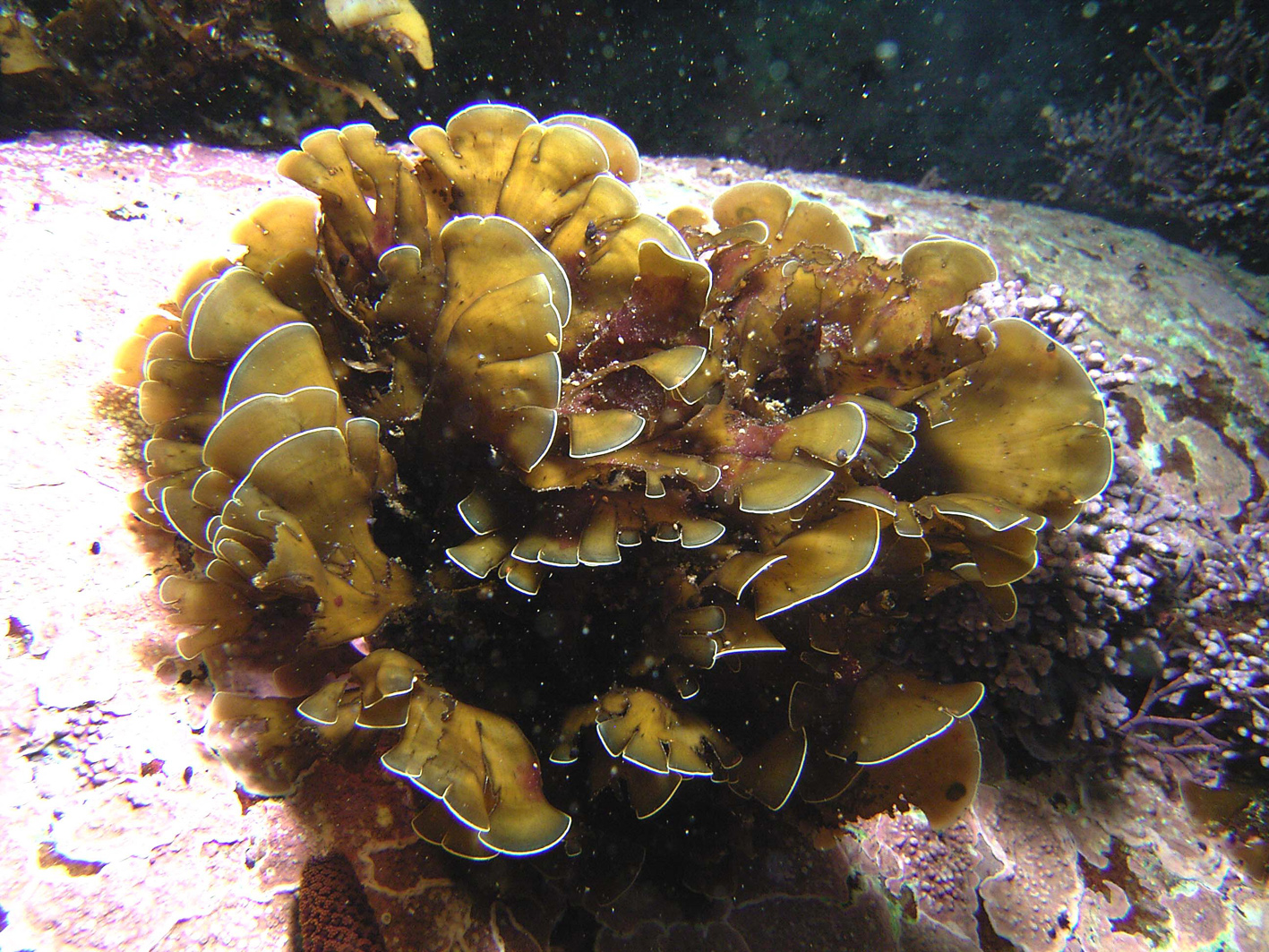
Exallosorus harveyanus.
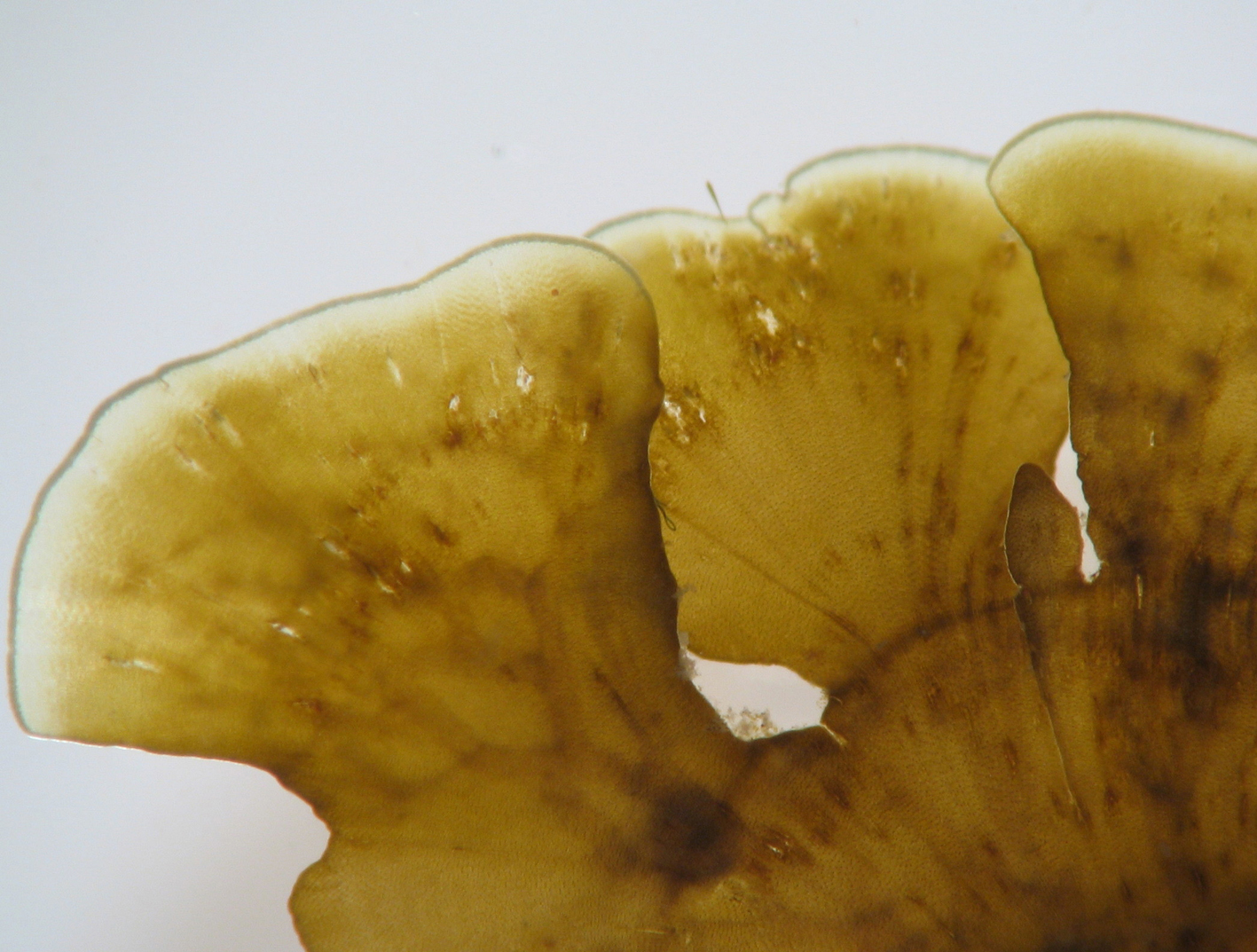
Exallosorus harveyanus, blade tips.
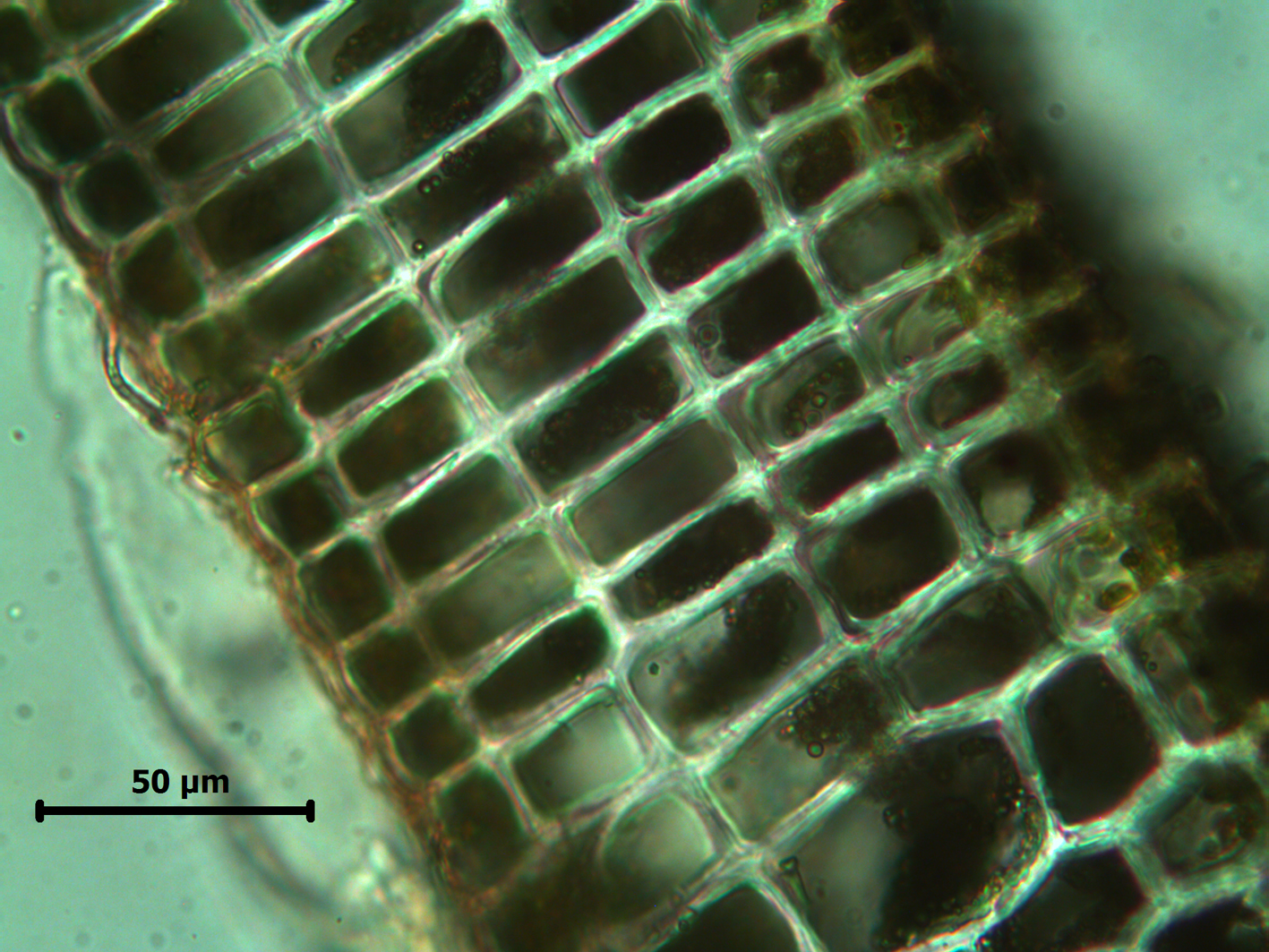
Exallosorus harveyanus, XS of mid-blade (False Bay specimen).
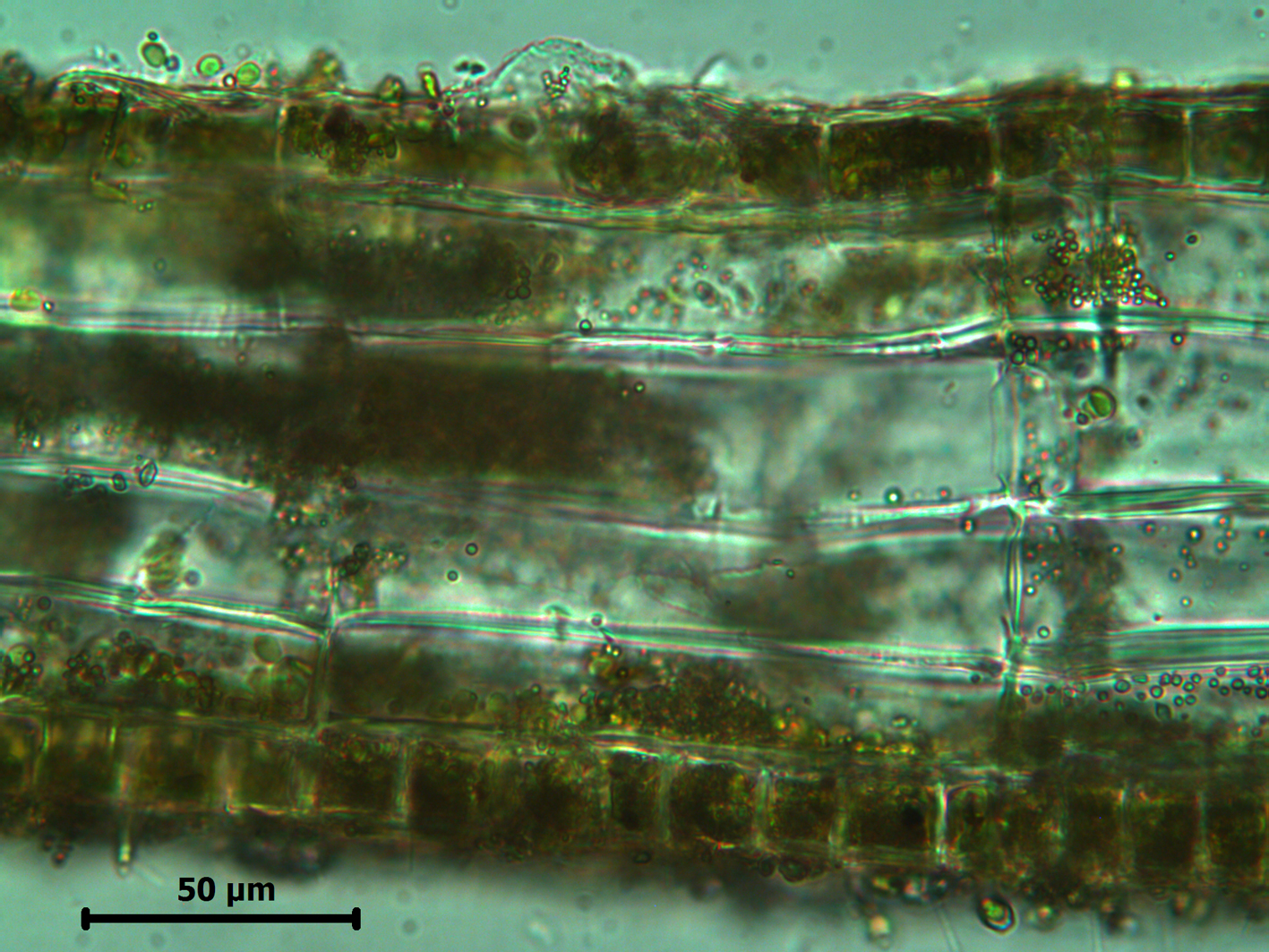
Exallosorus harveyanus, LS of mid-blade.
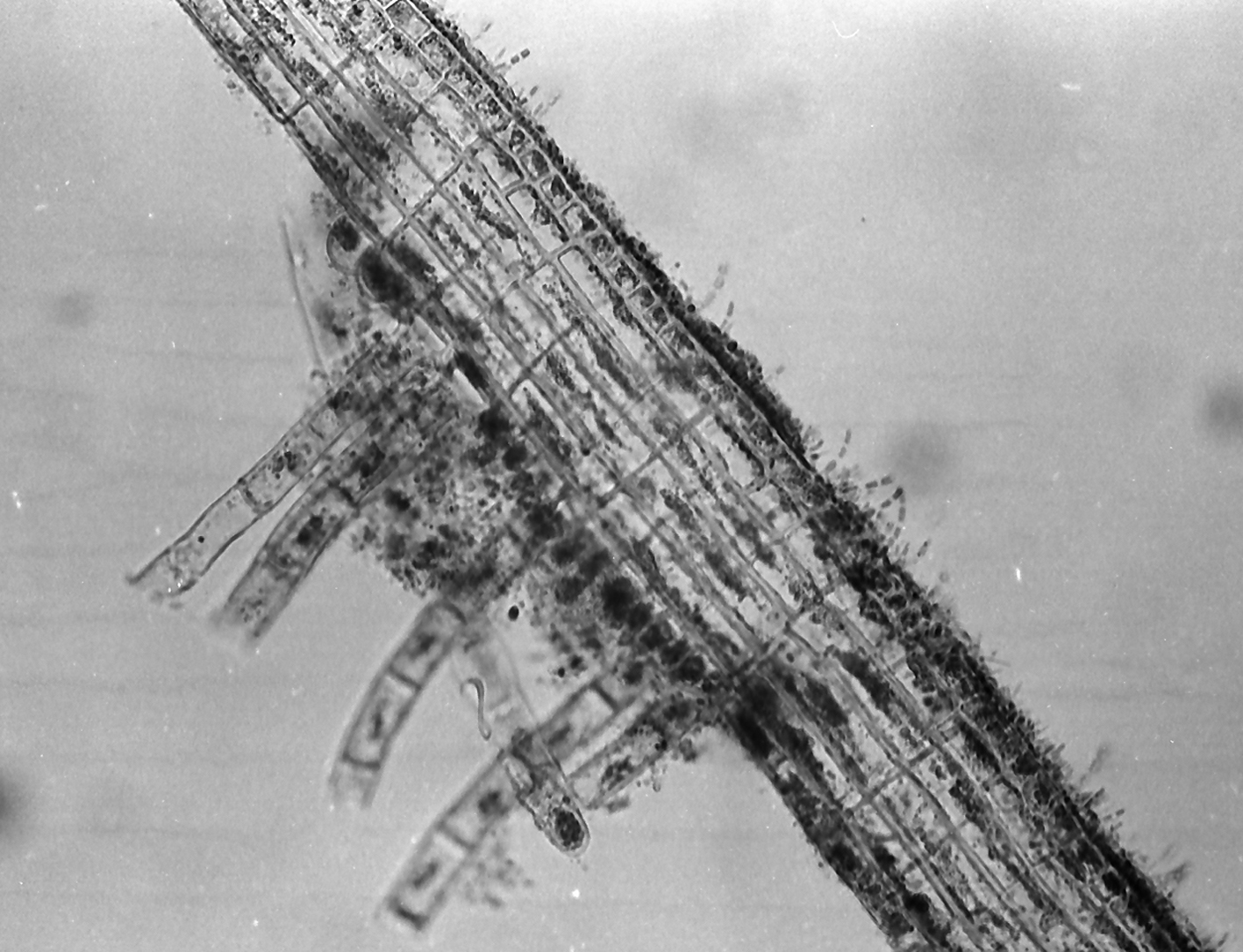
Exallosorus harveyanus, LS showing ventral attaching rhizoids (Bird Island slide specimen).
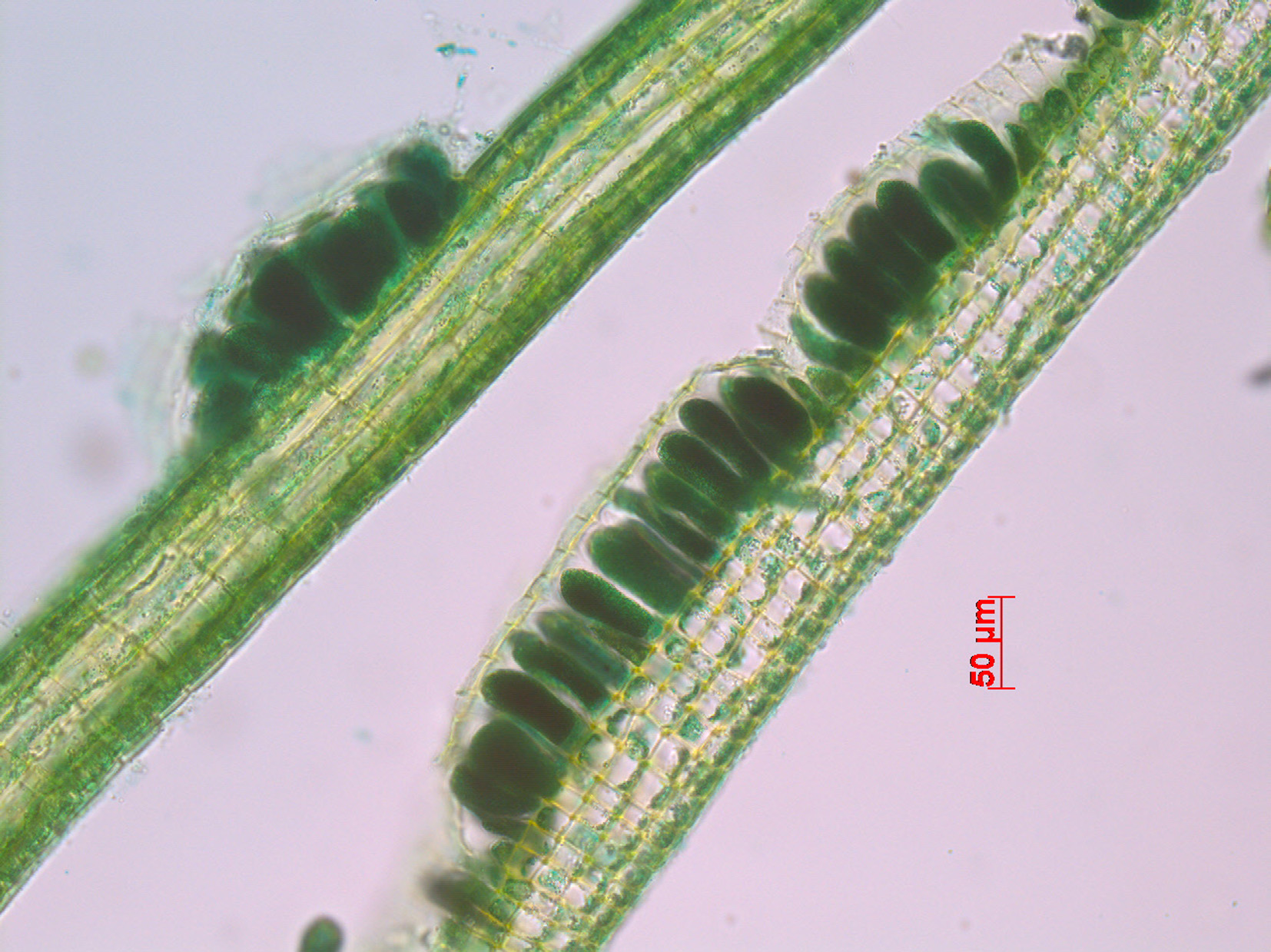
Exallosorus harveyanus, sections showing sporangial or gametangial sori. Right (below) in cross section; left (above) in longitudinal section (stained slide specimen).
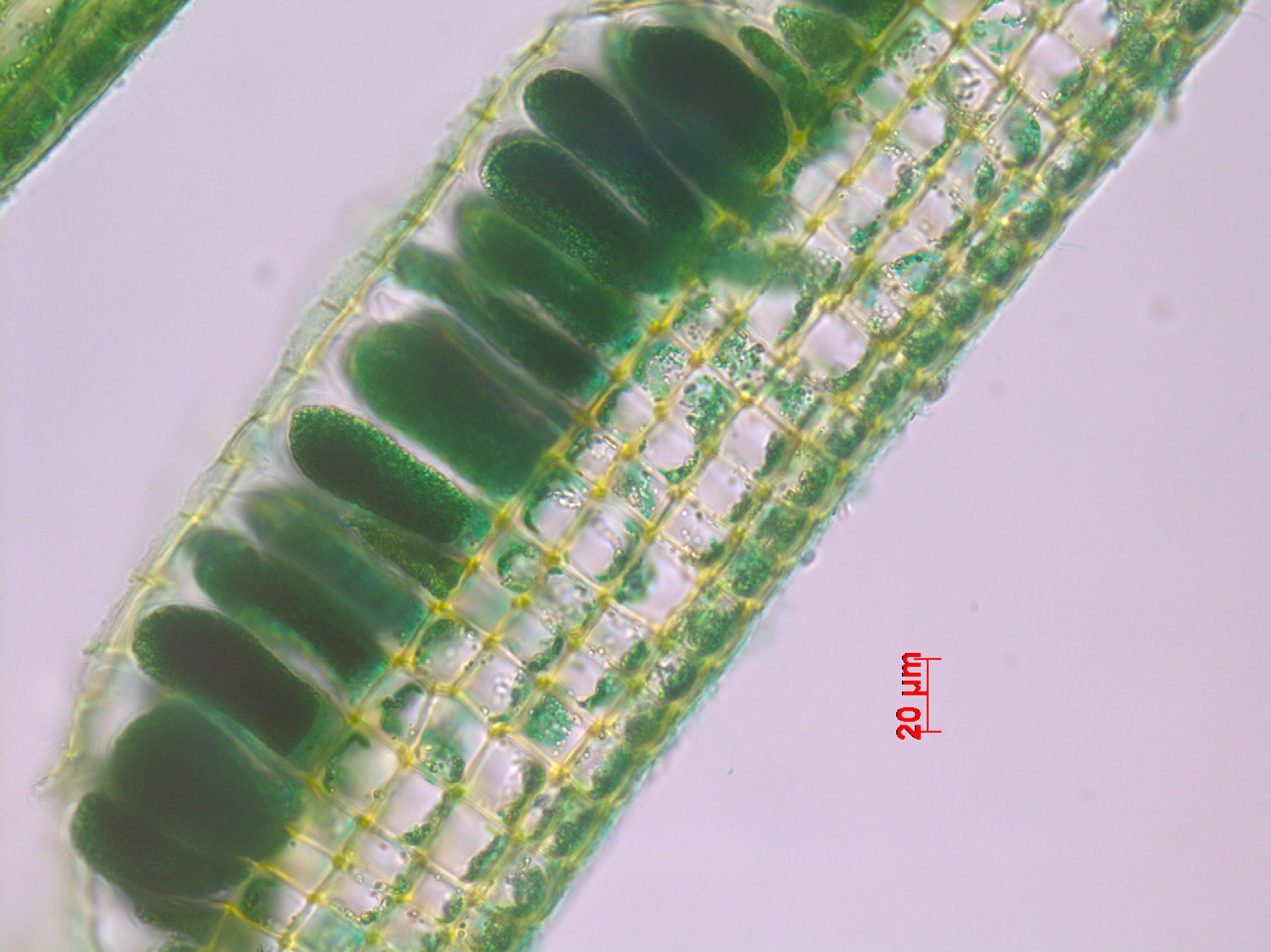
Exallosorus harveyanus, detail of cross section through blade and sorus (stained slide specimen).
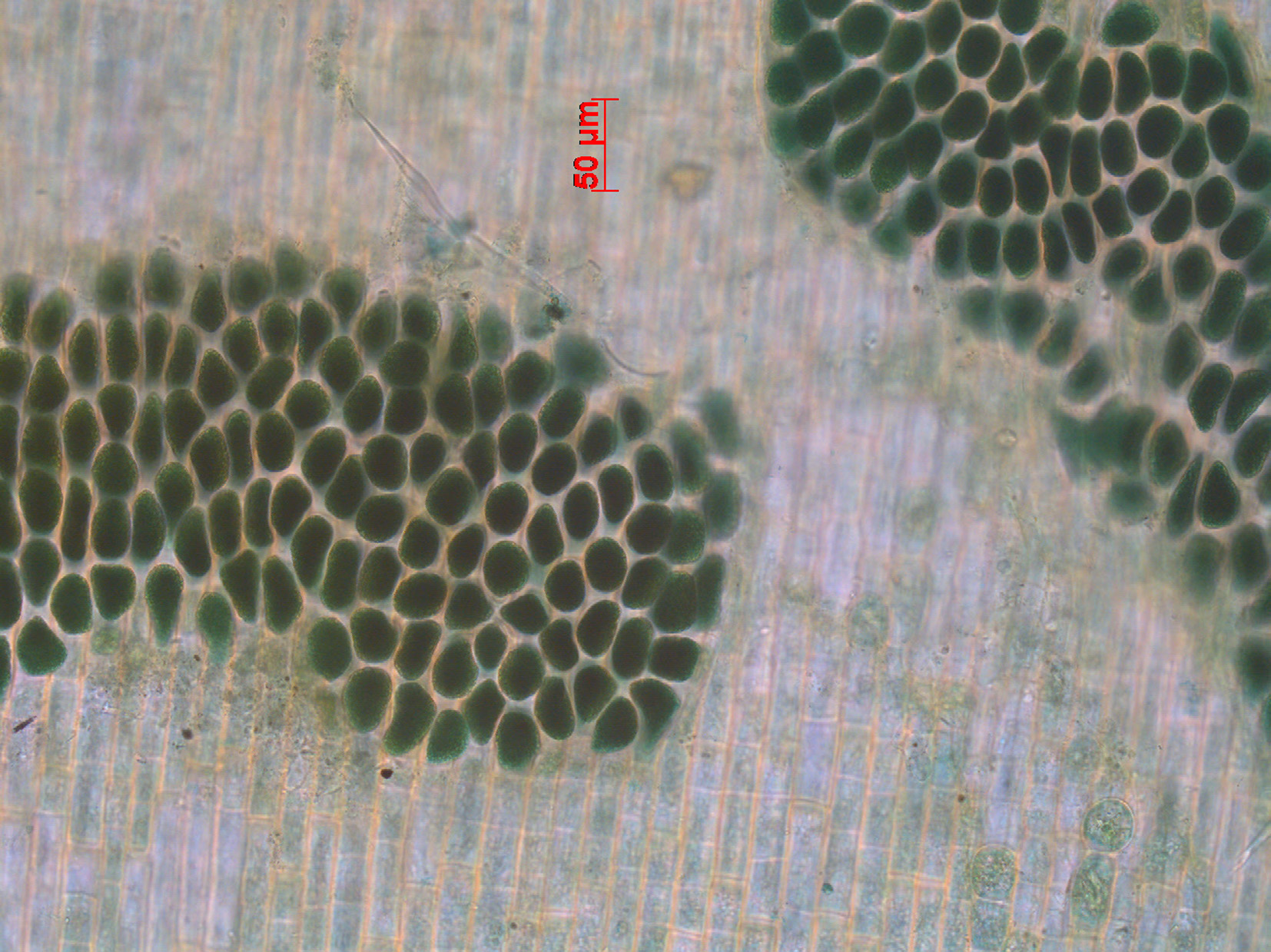
Exallosorus harveyanus, surface view of blade and sori. Note rather elongate shape of sporangia (or gametangia) in surface veiw (stained slide specimen).
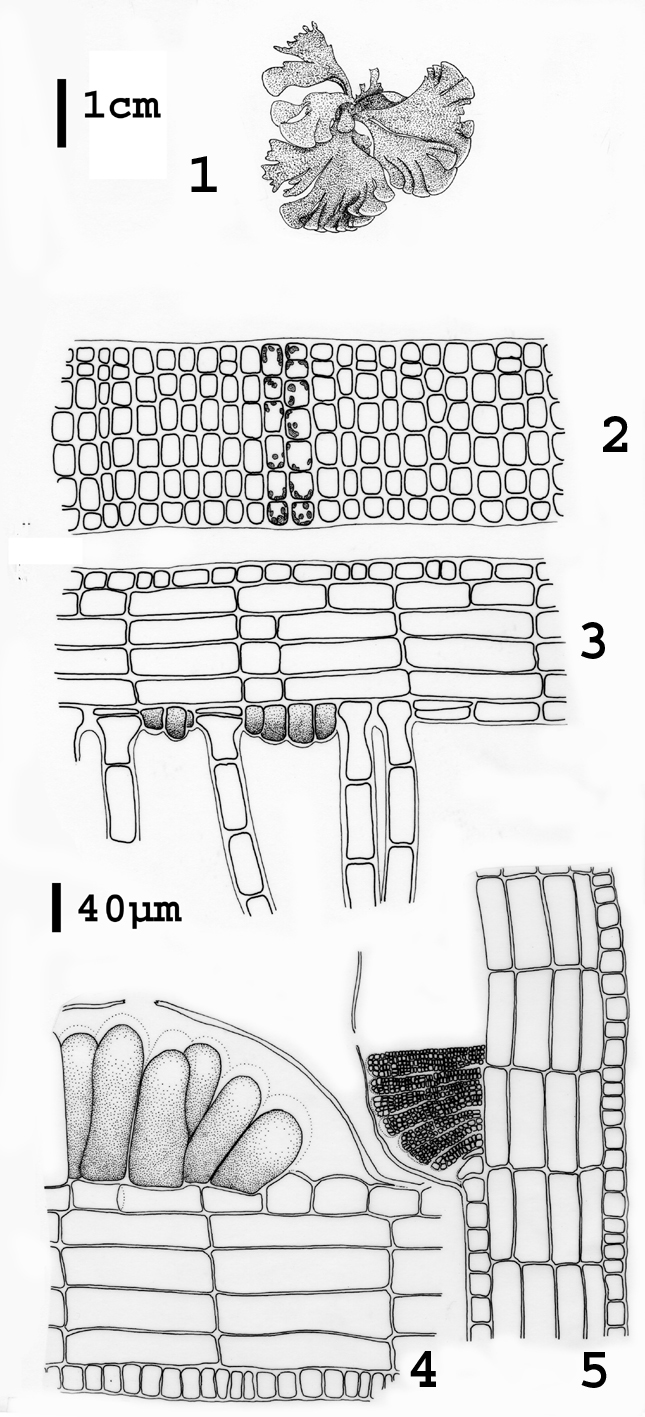
Exallosorus harveyanus. 1. Habit. 2. Cross section . 3. Longitudinal section. 4. Section of male gametangial sorus. 5. Section of oogonial sorus. Drawings reproduced from Stegenga et al. (1997).
References Exallosorus
Phillips, J.A. (1997). Genus and species concepts in Zonaria and Homoeostrichus (Dictyotales, Phaeophyceae), including the description of Exallosorus gen. nov. European Journal of Phycology 32: 303-311, 15 figs, 5 tables.
Silva, P.C., Basson, P.W. & Moe, R.L. (1996). Catalogue of the benthic marine algae of the Indian Ocean. University of California Publications in Botany 79: 1-1259.
Stegenga, H., Bolton, J.J. and R. J. Anderson. 1997. Seaweeds of the South African west coast. Contributions from the Bolus Herbarium 18: 655 pp.
Cite this record as:
Anderson RJ, Stegenga H, Bolton JJ. 2016. Seaweeds of the South African South Coast.
World Wide Web electronic publication, University of Cape Town, http://southafrseaweeds.uct.ac.za; Accessed on 07 December 2025.